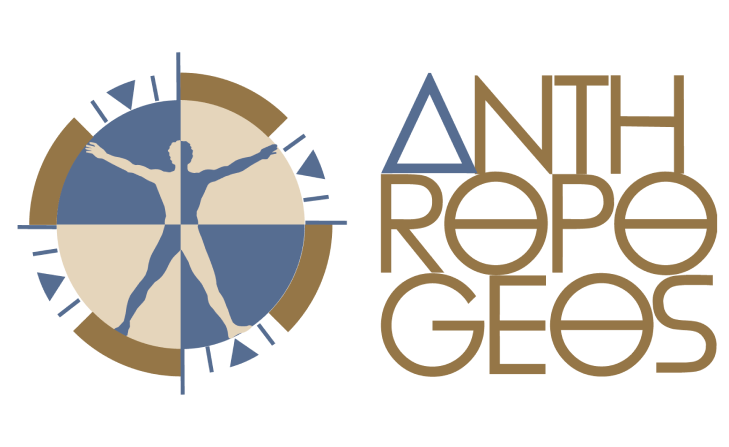WHAT IS ANTARCTICA
WHAT IS ANTARCTICA
TERRITORY
TERRITORY
It is customary to refer to the continent and the islands adjacent to it as ‘Antarctica’. Its area is approximately 14 million square kilometers. The northern boundary is the line of the Arctic convergence, a band of confluence in the cold Arctic waters with waters of temperate latitudes (depending on the season, between 50 and 60 degrees on a southern latitude).
The mainland is covered with a layer of ice kilometers thick, which began to form 30-35 million years ago. The layer makes up 90% of all ice on our planet and 70% of our fresh water reserves. The thickness of the dome is between 2500 and 4800 meters, and the ice sheet is constantly in motion, sliding from the center of the mainland to the coast. This glacier also explains the height of the continent above sea level. If all the ice in Antarctica were to melt, the water level in the world's oceans would rise by 60 meters.
The mainland is covered with a layer of ice kilometers thick, which began to form 30-35 million years ago. The layer makes up 90% of all ice on our planet and 70% of our fresh water reserves. The thickness of the dome is between 2500 and 4800 meters, and the ice sheet is constantly in motion, sliding from the center of the mainland to the coast. This glacier also explains the height of the continent above sea level. If all the ice in Antarctica were to melt, the water level in the world's oceans would rise by 60 meters.
It is customary to refer to the continent and the islands adjacent to it as ‘Antarctica’. Its area is approximately 14 million square kilometers. The northern boundary is the line of the Arctic convergence, a band of confluence in the cold Arctic waters with waters of temperate latitudes (depending on the season, between 50 and 60 degrees on a southern latitude).
The mainland is covered with a layer of ice kilometers thick, which began to form 30-35 million years ago. The layer makes up 90% of all ice on our planet and 70% of our fresh water reserves. The thickness of the dome is between 2500 and 4800 meters, and the ice sheet is constantly in motion, sliding from the center of the mainland to the coast. This glacier also explains the height of the continent above sea level. If all the ice in Antarctica were to melt, the water level in the world's oceans would rise by 60 meters.
The mainland is covered with a layer of ice kilometers thick, which began to form 30-35 million years ago. The layer makes up 90% of all ice on our planet and 70% of our fresh water reserves. The thickness of the dome is between 2500 and 4800 meters, and the ice sheet is constantly in motion, sliding from the center of the mainland to the coast. This glacier also explains the height of the continent above sea level. If all the ice in Antarctica were to melt, the water level in the world's oceans would rise by 60 meters.

A “cross-section” of the Antarctic continent.

A “cross-section” of the Antarctic continent.
DUE TO THE SHIFTING ICE DOME, ONE OF THE MAIN DANGERS FOR TRAVELERS IN ANTARCTICA ARE THE SURFACE CREVICES IN THE ICE.
DUE TO THE SHIFTING ICE DOME, ONE OF THE MAIN DANGERS FOR TRAVELERS IN ANTARCTICA ARE THE SURFACE CREVICES IN THE ICE.
Their depths can reach several hundred meters, and their number is constantly growing, along with the increases in average temperatures around the planet. There are not many in the interior of the continent, but the closer one gets to the coast, the more of them one finds. They are covered with snow and can be difficult to distinguish from the surface. To find crevices, special scanners are installed on the front of vehicles. And before the tourist season opens, all roads are carefully checked to ensure safety.
Their depths can reach several hundred meters, and their number is constantly growing, along with the increases in average temperatures around the planet. There are not many in the interior of the continent, but the closer one gets to the coast, the more of them one finds. They are covered with snow and can be difficult to distinguish from the surface. To find crevices, special scanners are installed on the front of vehicles. And before the tourist season opens, all roads are carefully checked to ensure safety.
Satellite images of ice melting in Antarctica in the abnormally warm February 2020. NASA Observatory.
Satellite images of ice melting in Antarctica in the abnormally warm February 2020. NASA Observatory.
There are mountain ranges under the ice, but, at the same time, about a third of the ‘land’ is actually below sea level. Antarctica is home to one of the highest mountains on earth, Mount Vinson (4892 meters), and one of the deepest troughs, the Bentley Subglacial Trench (2555 meters).
About 10% of glaciers are concentrated on the shelf, and they are a constant source of icebergs. In winter, the area of ice around Antarctica grows to 18 million square kilometers, and in summer it decreases to 3-4 million.
Antarctica is also home to other interesting attractions, including Erebus, the southernmost active volcano on Earth; and the Wilkes Land Crater, which is 500 km wide, making it the largest crater formed by an asteroid.
About 10% of glaciers are concentrated on the shelf, and they are a constant source of icebergs. In winter, the area of ice around Antarctica grows to 18 million square kilometers, and in summer it decreases to 3-4 million.
Antarctica is also home to other interesting attractions, including Erebus, the southernmost active volcano on Earth; and the Wilkes Land Crater, which is 500 km wide, making it the largest crater formed by an asteroid.
There are mountain ranges under the ice, but, at the same time, about a third of the ‘land’ is actually below sea level. Antarctica is home to one of the highest mountains on earth, Mount Vinson (4892 meters), and one of the deepest troughs, the Bentley Subglacial Trench (2555 meters).
About 10% of glaciers are concentrated on the shelf, and they are a constant source of icebergs. In winter, the area of ice around Antarctica grows to 18 million square kilometers, and in summer it decreases to 3-4 million.
Antarctica is also home to other interesting attractions, including Erebus, the southernmost active volcano on Earth; and the Wilkes Land Crater, which is 500 km wide, making it the largest crater formed by an asteroid.
About 10% of glaciers are concentrated on the shelf, and they are a constant source of icebergs. In winter, the area of ice around Antarctica grows to 18 million square kilometers, and in summer it decreases to 3-4 million.
Antarctica is also home to other interesting attractions, including Erebus, the southernmost active volcano on Earth; and the Wilkes Land Crater, which is 500 km wide, making it the largest crater formed by an asteroid.
CLIMATE
CLIMATE
On the southern continent there is an absolute cold pole where average temperatures are, on average, 13 degrees lower than in the Arctic. In winter, temperatures in the interior regions reach -70⁰С, and in summer, they are rarely higher than -30⁰С. On the coast, in summer, the air can warm up from 0 to 5⁰С, and can fall from -8 to -35⁰С in the winter. The record for the lowest temperature in the world was set here, at Vostok station, on July 23, 1983 when mercury plummeted to -89.2⁰С. Such low temperatures, among other things, are explained by the height of the continent's ice cap above sea level.
On the southern continent there is an absolute cold pole where average temperatures are, on average, 13 degrees lower than in the Arctic. In winter, temperatures in the interior regions reach -70⁰С, and in summer, they are rarely higher than -30⁰С. On the coast, in summer, the air can warm up from 0 to 5⁰С, and can fall from -8 to -35⁰С in the winter. The record for the lowest temperature in the world was set here, at Vostok station, on July 23, 1983 when mercury plummeted to -89.2⁰С. Such low temperatures, among other things, are explained by the height of the continent's ice cap above sea level.

Officially, Antarctica is the driest desert on the planet. In some places, there has been no precipitation for several million years. The storm that happened during our expedition is a rather rare phenomenon, with snow not falling from the sky, but rather rising from the surface of the earth on a strong wind. It is the windiest continent on Earth. The highest wind speed recorded is 230 kilometers per hour.
A storm during the Anthropogeos expedition, near the Nunatak mountains, January 2020.
Officially, Antarctica is the driest desert on the planet. In some places, there has been no precipitation for several million years. The storm that happened during our expedition is a rather rare phenomenon, with snow not falling from the sky, but rather rising from the surface of the earth on a strong wind. It is the windiest continent on Earth. The highest wind speed recorded is 230 kilometers per hour.

A storm during the Anthropogeos expedition, near the Nunatak mountains, January 2020.
The constantly blowing wind forms sharp snowy peaks, known as zastrugi, which must be traversed with great care by vehicles. On the runways at the beginning of the season, they are cut and leveled with the help of special equipment, otherwise the plane would simply not be able to land on the surface.
The constantly blowing wind forms sharp snowy peaks, known as zastrugi, which must be traversed with great care by vehicles. On the runways at the beginning of the season, they are cut and leveled with the help of special equipment, otherwise the plane would simply not be able to land on the surface.
The relief of the ice surface of Antarctica.


The relief of the ice surface of Antarctica.
If we move inland, after 100-300 km a zone of low pressure begins, which requires one to adapt while moving on. The deeper one goes, the higher it gets, so remaining watchful for the symptoms of altitude sickness and taking into account the time to adapt while traveling is paramount.
If we move inland, after 100-300 km a zone of low pressure begins, which requires one to adapt while moving on. The deeper one goes, the higher it gets, so remaining watchful for the symptoms of altitude sickness and taking into account the time to adapt while traveling is paramount.
RESIDENTS
RESIDENTS
Today, not a single meter of the continent belongs to any state, although there are numerous research stations based in Antarctica. The treaty on the inviolability of the Antarctic territory and prohibition of the development of minerals on the shelf was signed on December 1, 1959 in Washington. In 1982, the Convention for the Conservation of Antarctic Marine Living Resources was added to it.
Today, not a single meter of the continent belongs to any state, although there are numerous research stations based in Antarctica. The treaty on the inviolability of the Antarctic territory and prohibition of the development of minerals on the shelf was signed on December 1, 1959 in Washington. In 1982, the Convention for the Conservation of Antarctic Marine Living Resources was added to it.

Location of research stations on the continent. Source: Wikipedia

Location of research stations on the continent. Source: Wikipedia
While the continent is officially uninhabited, there are plenty of residents here. In Antarctica, there are 90 polar stations under the flags of 30 states, with four of them located inside the continent: Vostok (Russia), Amundsen-Scott (USA), Concordia (Italy, France), and Kunlun (China). Employees live there all year round. And in the summer, from November to January, the tourists start to arrive in Antarctica.
While the continent is officially uninhabited, there are plenty of residents here. In Antarctica, there are 90 polar stations under the flags of 30 states, with four of them located inside the continent: Vostok (Russia), Amundsen-Scott (USA), Concordia (Italy, France), and Kunlun (China). Employees live there all year round. And in the summer, from November to January, the tourists start to arrive in Antarctica.
TOURISTS
TOURISTS

The Anthropogeos team at the South Pole.

The Anthropogeos team at the South Pole.
THE HISTORY OF TOURISM IN ANTARCTICA BEGINS IN 1985, WITH THE FIRST ASCENT OF MOUNT VINSON.
THE HISTORY OF TOURISM IN ANTARCTICA BEGINS IN 1985, WITH THE FIRST ASCENT OF MOUNT VINSON.
Today, these are no longer one-off trips made by adventurous travelers, but a fully-fledged infrastructure for tourism. A trip across the mainland is more like a tour through the colonization of the twenty-first century. Instead of looking for wealth in a new land, people come here to spend it. Moreover, this is strictly controlled by international organizations.
The main guarantor of the ethics of private business and tourism here is the International Association of Antarctic Tour Operators, IAATO. The organization was established in 1991 to ensure people’s safety while touring, and to protect the continent.
The main guarantor of the ethics of private business and tourism here is the International Association of Antarctic Tour Operators, IAATO. The organization was established in 1991 to ensure people’s safety while touring, and to protect the continent.
Today, these are no longer one-off trips made by adventurous travelers, but a fully-fledged infrastructure for tourism. A trip across the mainland is more like a tour through the colonization of the twenty-first century. Instead of looking for wealth in a new land, people come here to spend it. Moreover, this is strictly controlled by international organizations.
The main guarantor of the ethics of private business and tourism here is the International Association of Antarctic Tour Operators, IAATO. The organization was established in 1991 to ensure people’s safety while touring, and to protect the continent.
The main guarantor of the ethics of private business and tourism here is the International Association of Antarctic Tour Operators, IAATO. The organization was established in 1991 to ensure people’s safety while touring, and to protect the continent.
AS OF 2021, THE MANAGEMENT OF TOURIST FLOWS ON THE CONTINENT IS DIVIDED BETWEEN THREE COMPANIES, AND ALL OTHER TOUR OPERATORS HAVE TO WORK WITH THEM IN ONE WAY OR ANOTHER.
AS OF 2021, THE MANAGEMENT OF TOURIST FLOWS ON THE CONTINENT IS DIVIDED BETWEEN THREE COMPANIES, AND ALL OTHER TOUR OPERATORS HAVE TO WORK WITH THEM IN ONE WAY OR ANOTHER.
And all because running a tourism business here means meeting three conditions: the company must independently provide logistics (their own or contracted planes for the season), safety, and cleanliness (removal of all waste from the continent).
Arctic Trucks, our tour operator, brings about 15 people to Antarctica every year. The nearest plans are to increase this number to 36. Such small numbers are also explained by the fact that the main operators, who have camps and aviation in Antarctica, are very limited in resources, and it costs considerable sums of money to build something new here. But, at the same time, everything is gradually moving towards the democratization, and expansion, of tourism.
Arctic Trucks, our tour operator, brings about 15 people to Antarctica every year. The nearest plans are to increase this number to 36. Such small numbers are also explained by the fact that the main operators, who have camps and aviation in Antarctica, are very limited in resources, and it costs considerable sums of money to build something new here. But, at the same time, everything is gradually moving towards the democratization, and expansion, of tourism.
And all because running a tourism business here means meeting three conditions: the company must independently provide logistics (their own or contracted planes for the season), safety, and cleanliness (removal of all waste from the continent).
Arctic Trucks, our tour operator, brings about 15 people to Antarctica every year. The nearest plans are to increase this number to 36. Such small numbers are also explained by the fact that the main operators, who have camps and aviation in Antarctica, are very limited in resources, and it costs considerable sums of money to build something new here. But, at the same time, everything is gradually moving towards the democratization, and expansion, of tourism.
Arctic Trucks, our tour operator, brings about 15 people to Antarctica every year. The nearest plans are to increase this number to 36. Such small numbers are also explained by the fact that the main operators, who have camps and aviation in Antarctica, are very limited in resources, and it costs considerable sums of money to build something new here. But, at the same time, everything is gradually moving towards the democratization, and expansion, of tourism.

ALE (Antarctic Logistics & Expeditions)
Their area of responsibility is West Antarctica to the South Pole. Airport: Union Glacier (flights from Punta Arenas, Chile), permanent camps on Union Glacier, Mount Vision, Emperor Penguin Colony and South Pole. Summer camp located on the Vinson massif.

ALCI (Antarctic Logistics Center International)
Previously, this company was involved in logistics for government programs, but in recent years it has also become involved with the tourism sector. Airport near Novolazarevskaya station. Permanent small camp at the Schirmacher Oasis.

White Desert
A relatively new player on the continent that specializes in luxury tourism. The company has its own runway Wolf's Fang in the mountains, relatively close to Novolazarevskaya station. And the permanent Whichaway Camp.

ALE (Antarctic Logistics & Expeditions)
Their area of responsibility is West Antarctica to the South Pole. Airport: Union Glacier (flights from Punta Arenas, Chile), permanent camps on Union Glacier, Mount Vision, Emperor Penguin Colony and South Pole. Summer camp located on the Vinson massif.

ALCI (Antarctic Logistics Center International)
Previously, this company was involved in logistics for government programs, but in recent years it has also become involved with the tourism sector. Airport near Novolazarevskaya station. Permanent small camp at the Schirmacher Oasis.

White Desert
A relatively new player on the continent that specializes in luxury tourism. The company has its own runway Wolf's Fang in the mountains, relatively close to Novolazarevskaya station. And the permanent Whichaway Camp.
NOT ONLY TOURISTS COME TO ANTARCTICA DURING THE TOURIST SEASON, BUT ALSO WORKERS FROM TOURIST CAMPS, GUIDES, MECHANICS, DOCTORS. THEY ALSO MAKE UP THE MODERN COLONIZERS OF ANTARCTICA, WITH WHOM WE MET DURING OUR EXPEDITION AND AFTER ITS COMPLETION.
NOT ONLY TOURISTS COME TO ANTARCTICA DURING THE TOURIST SEASON, BUT ALSO WORKERS FROM TOURIST CAMPS, GUIDES, MECHANICS, DOCTORS. THEY ALSO MAKE UP THE MODERN COLONIZERS OF ANTARCTICA, WITH WHOM WE MET DURING OUR EXPEDITION AND AFTER ITS COMPLETION.
WHAT YOU NEED TO KNOW AS A NOOB IN ANTARCTICA
WHAT YOU NEED TO KNOW AS A NOOB IN ANTARCTICA
We asked our guides and the people we met to give some advice to those who are going on an Antarctic expedition for the first time. What should we expect and what do we need to know?
We asked our guides and the people we met to give some advice to those who are going on an Antarctic expedition for the first time. What should we expect and what do we need to know?
1
Everything here happens slowly, very slowly, much slower than you are used to.
1
Everything here happens slowly, very slowly, much slower than you are used to.
2
Be open, you can meet a huge number of people here, they are all very different. Be willing to help others and be patient. Everything happens here in due time.
2
Be open, you can meet a huge number of people here, they are all very different. Be willing to help others and be patient. Everything happens here in due time.
3
You don't need any special skills or increased frost resistance. You just need to take a balanced look at things and rationally evaluate your own expectations.
3
You don't need any special skills or increased frost resistance. You just need to take a balanced look at things and rationally evaluate your own expectations.
4
First of all, think about the quality of your clothes. They are extremely important here, especially the first layer. With good clothes and a decent pair of shoes, you can walk anywhere.
4
First of all, think about the quality of your clothes. They are extremely important here, especially the first layer. With good clothes and a decent pair of shoes, you can walk anywhere.
5
Try to enjoy the trip, find something interesting in the usual. There are so few things here that even a rare mountain on the horizon already brings joy.
5
Try to enjoy the trip, find something interesting in the usual. There are so few things here that even a rare mountain on the horizon already brings joy.
6
Be especially attentive when it comes to health, well-being and hygiene. Getting sick in the middle of Antarctica is the last thing you need.
6
Be especially attentive when it comes to health, well-being and hygiene. Getting sick in the middle of Antarctica is the last thing you need.
7
Listen to your guides and follow the rules they set for you. They are essential to the safety of you and your group.
7
Listen to your guides and follow the rules they set for you. They are essential to the safety of you and your group.
8
On any expedition, remember that you are a member of the team. Household duties are distributed among everyone here, and you will find yourself taking on household chores.
8
On any expedition, remember that you are a member of the team. Household duties are distributed among everyone here, and you will find yourself taking on household chores.
Previous chapter
INTRODUCTION
continue reading ➔
II PREPARING FOR A TRIP
continue reading ➔
II PREPARING FOR A TRIP
Previous chapter
INTRODUCTION
©
Anthropogeos. 2021
Contacts
Our social channels










